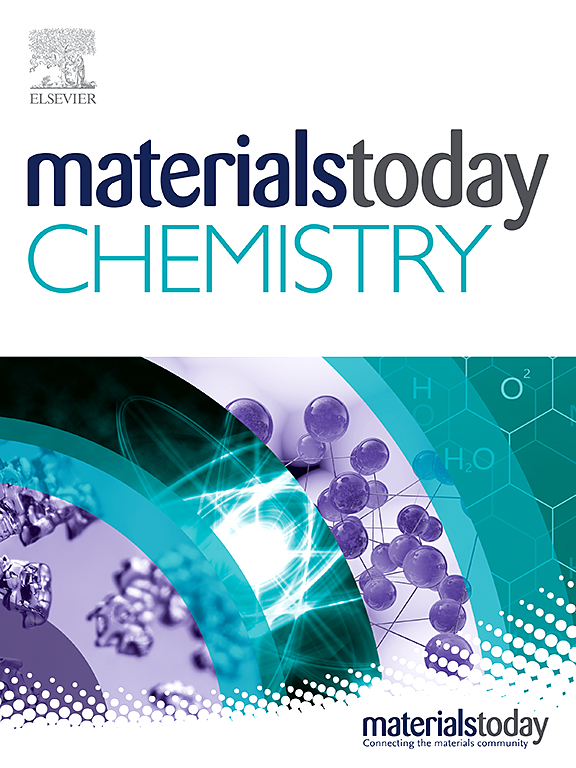用于抗菌治疗的生物医学金属有机框架材料:前景与挑战
IF 6.7
2区 化学
Q1 CHEMISTRY, MULTIDISCIPLINARY
引用次数: 0
摘要
作为人体内部器官结构与外部环境之间的屏障,皮肤承担着保护、调节和新陈代谢等重要的生理任务。皮肤与外界的密切互动使其特别容易受到许多伤害。细菌感染会延长伤口愈合的时间,增加慢性损伤的风险,并滋生耐药细菌。因此,快速有效地清除伤口区域的细菌种类至关重要。金属有机框架(MOFs)是一种关键的可调式混合材料,它将有机配体与配位金属结合在一起,产生一系列拓扑同构结构。MOF 的生成和形状受反应过程中使用的金属源和配体的影响,这种近乎无限的结构组合所带来的结构优势为其表面功能化提供了无限潜力。MOF 具有有效表面积大、结构可调、适应性强、生物降解性好、载药量高、药物释放可调、靶向性强等特点。它可以负载治疗材料,具有可编程性。它更有利于治疗复杂伤口,同时实现抗菌、消炎和促进血管生成的协同作用,有效提高治疗安全性。本综述以各种类型的金属离子基 MOFs 为切入点,总结了各种 MOFs 在抗菌治疗方面的最新研究进展。最后,还介绍了金属离子基 MOFs 在抗菌治疗方面面临的几个重要挑战。本文章由计算机程序翻译,如有差异,请以英文原文为准。
Biomedical Metal–Organic framework materials on antimicrobial therapy: Perspectives and challenges
As a barrier between the structure of the human body's internal organs and the outside environment, the skin serves crucial physiological tasks like protection, regulation, and metabolism. The skin's close interaction with the outside makes it particularly vulnerable to many injuries. Bacterial infections cause wound healing to take longer, raise the risk of chronic harm, and serve as a breeding ground for drug-resistant bacteria. As a result, it is critical to eliminate bacterial species from the wound region rapidly and efficiently. Metal-organic frameworks (MOFs), are critically adjustable hybrid materials that integrate organic ligands with coordination metals to generate a range of topologically isomorphic structures. MOFs' creation and shape are investigated by the metal source and ligand utilized in the reaction process, and the structural benefits of this near-infinite combination of structures allow boundless potential for their surface functionalization. MOF has a large effective surface area, tunable structure, adaptability, excellent biodegradability, high drug load, adjustable release of drugs, robust targeting, etc. It can be loaded with therapeutic materials and has programmability. It is more conducive to treating complex wounds while realizing the synergistic effects of antibacterial, anti-inflammatory, and pro-angiogenesis, effectively improving treatment safety. This review summarizes the most recent research advances on various MOFs for antimicrobial therapy, using diverse types of metal-ion-based MOFs as an entry point. Finally, it covers several important challenges in the antimicrobial treatment of metal-ion-based MOFs.
求助全文
通过发布文献求助,成功后即可免费获取论文全文。
去求助
来源期刊

Materials Today Chemistry
Multiple-
CiteScore
8.90
自引率
6.80%
发文量
596
审稿时长
33 days
期刊介绍:
Materials Today Chemistry is a multi-disciplinary journal dedicated to all facets of materials chemistry.
This field represents one of the fastest-growing areas of science, involving the application of chemistry-based techniques to the study of materials. It encompasses materials synthesis and behavior, as well as the intricate relationships between material structure and properties at the atomic and molecular scale. Materials Today Chemistry serves as a high-impact platform for discussing research that propels the field forward through groundbreaking discoveries and innovative techniques.
 求助内容:
求助内容: 应助结果提醒方式:
应助结果提醒方式:


